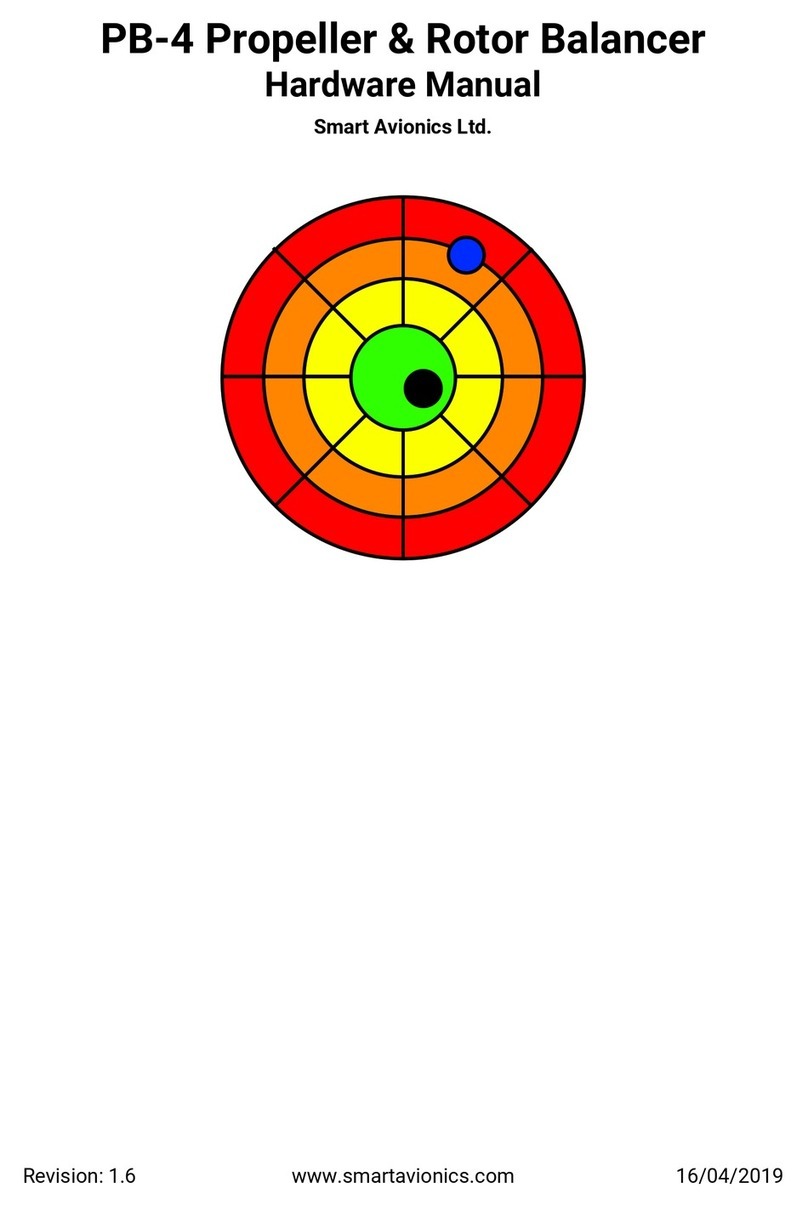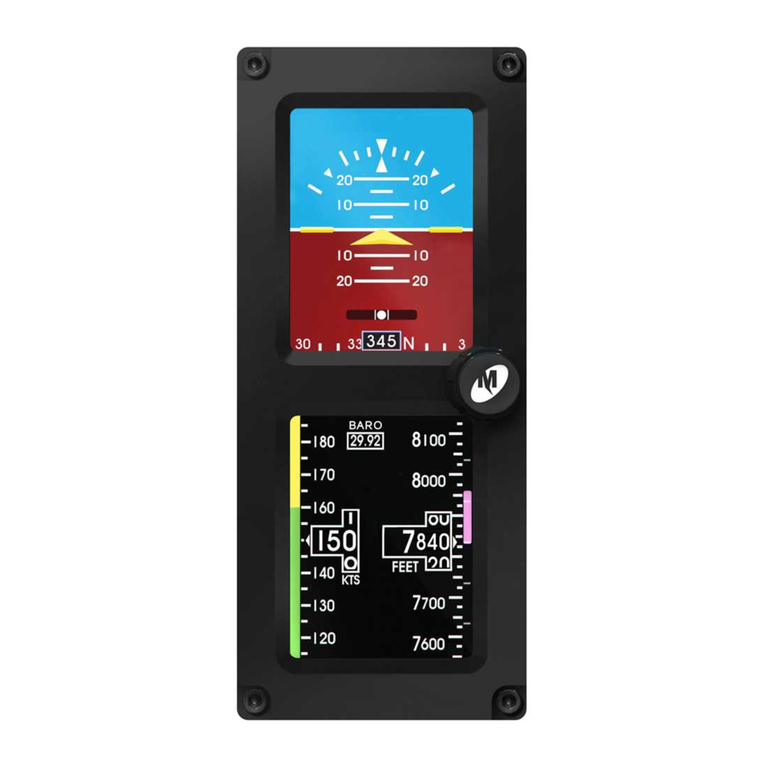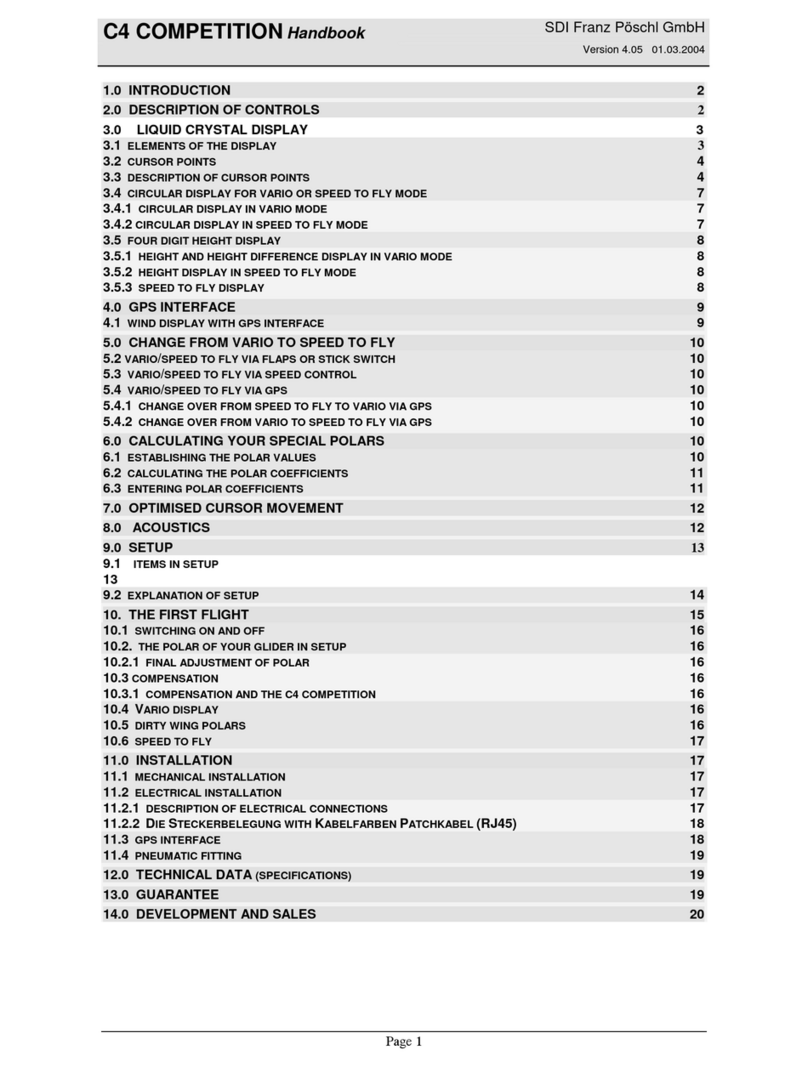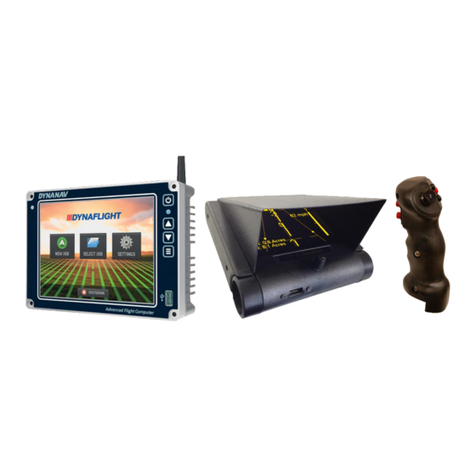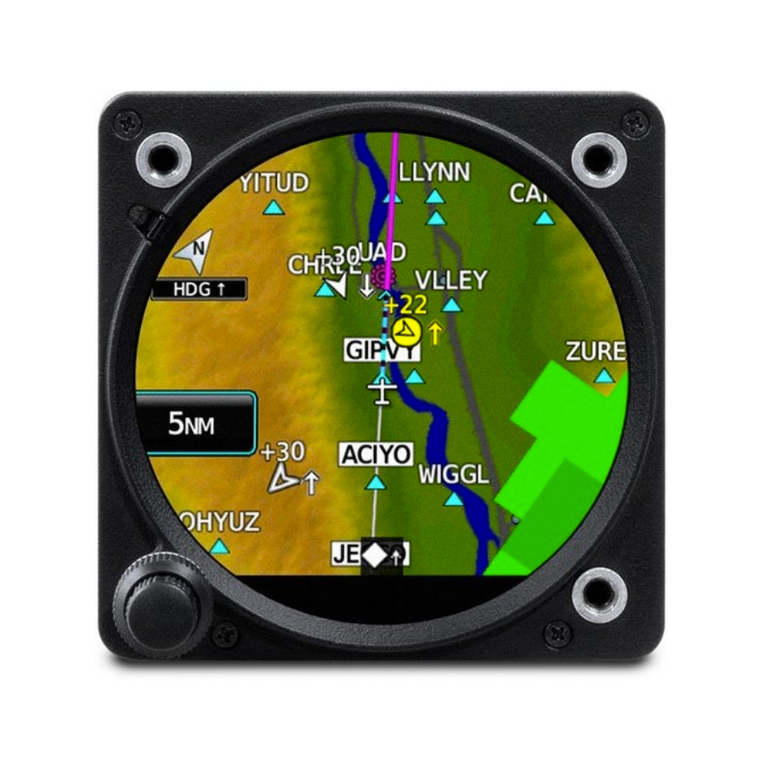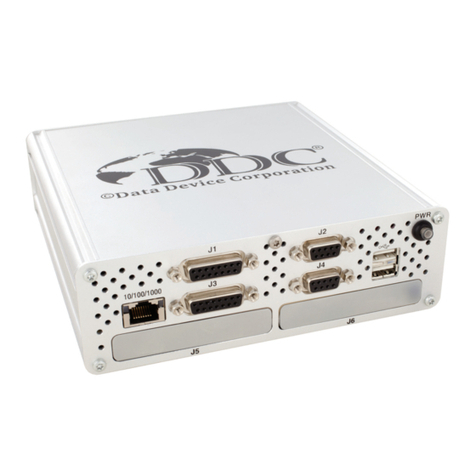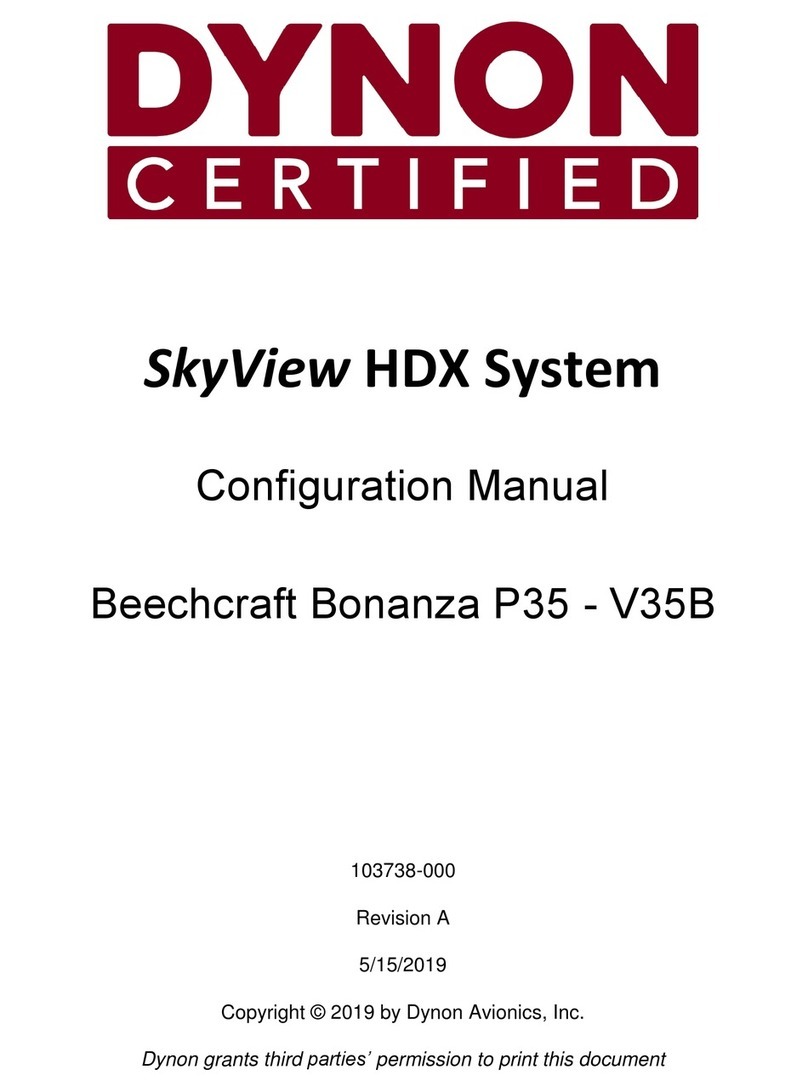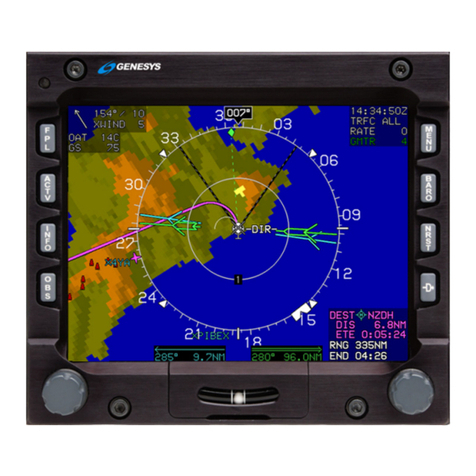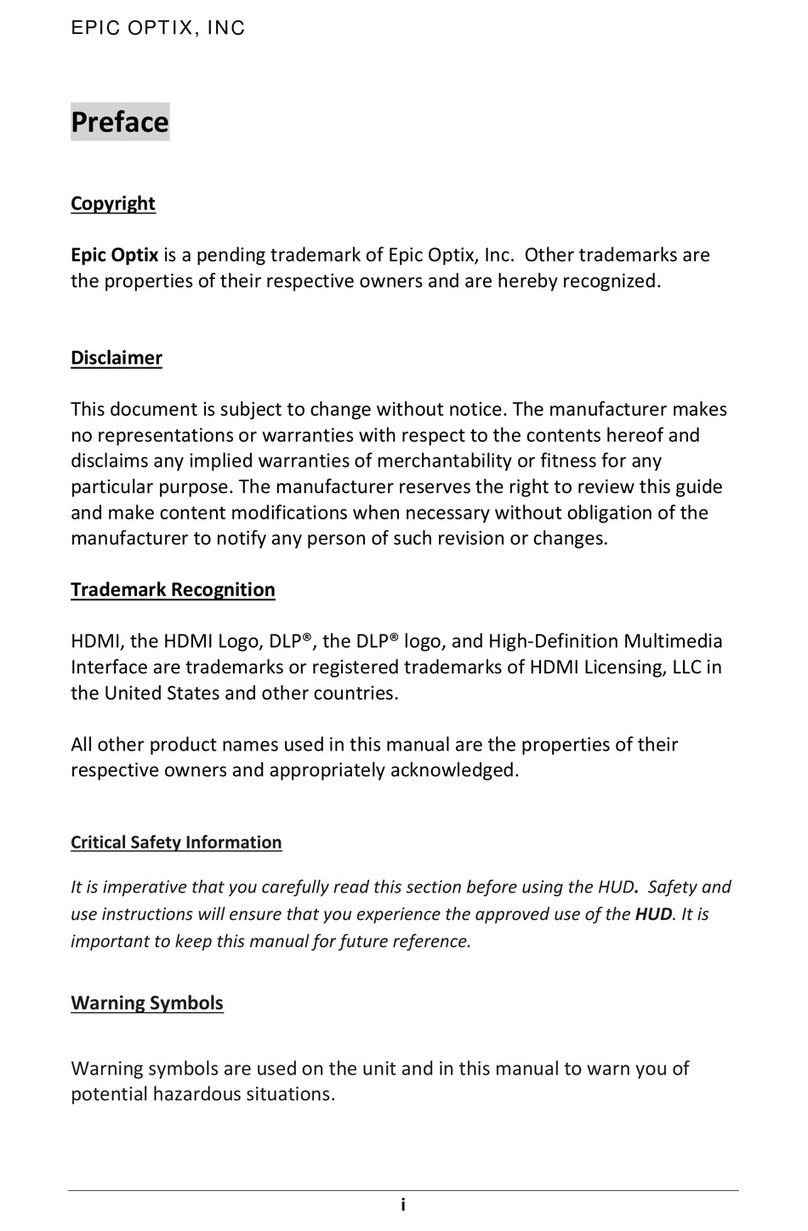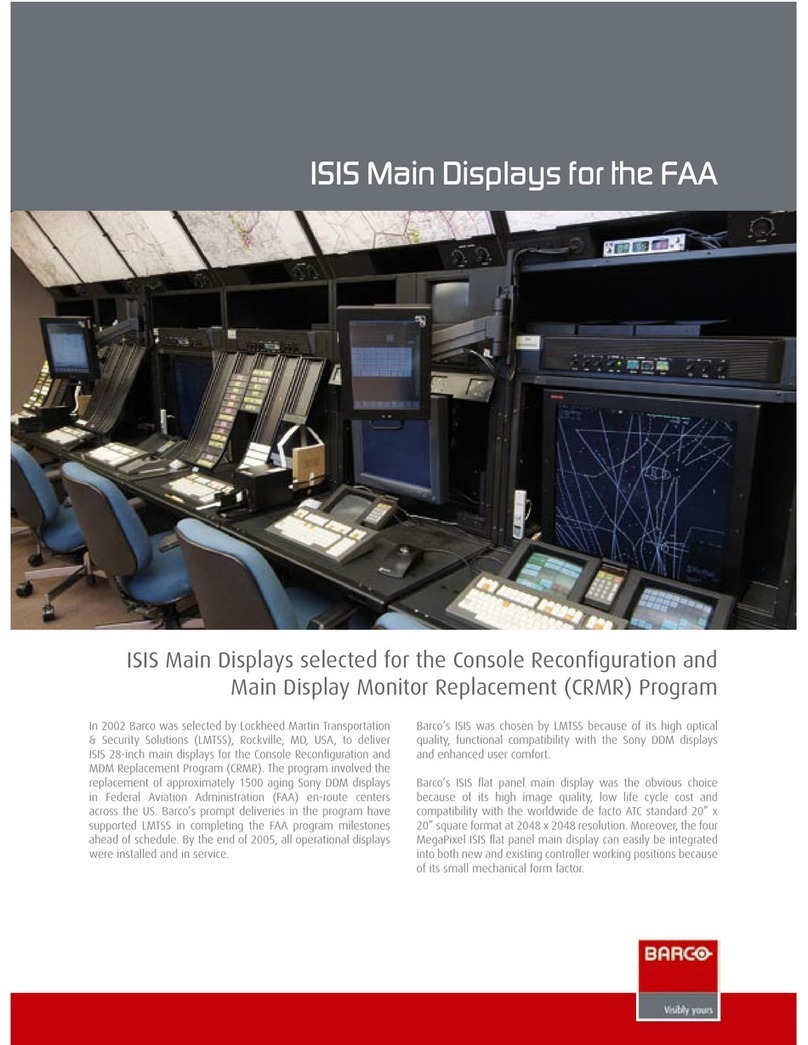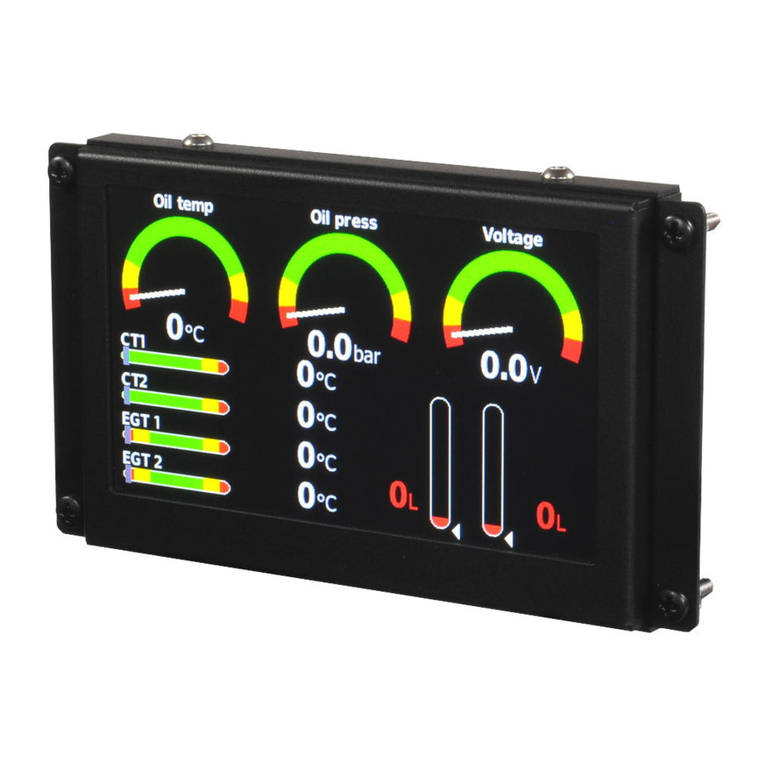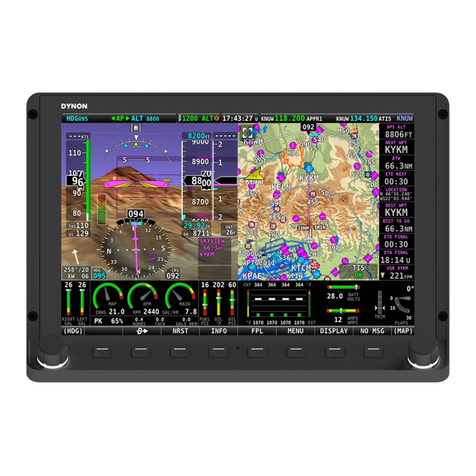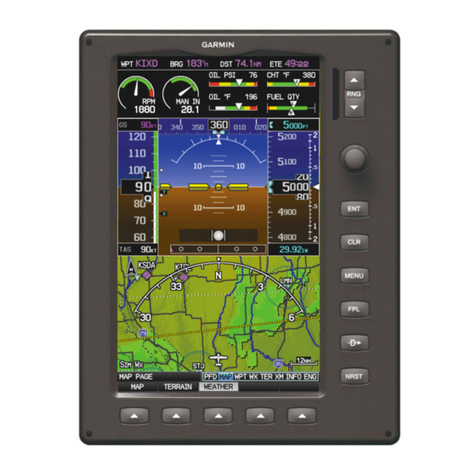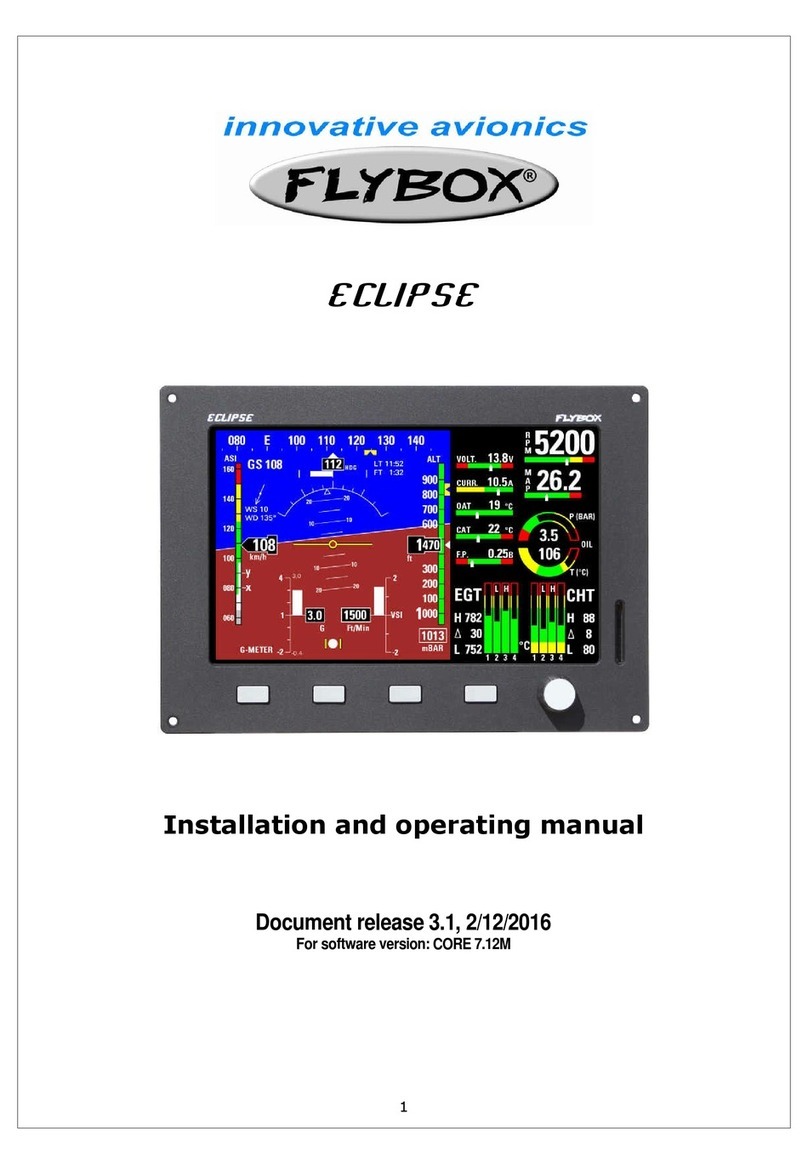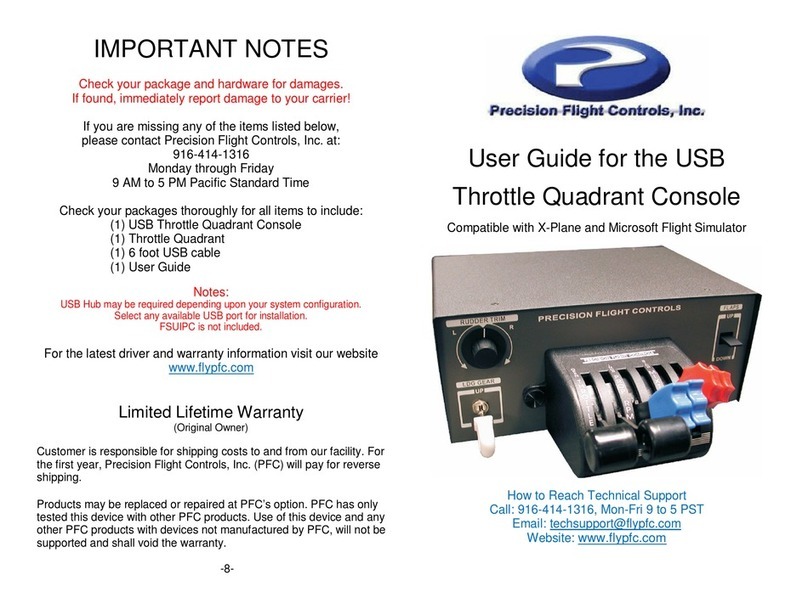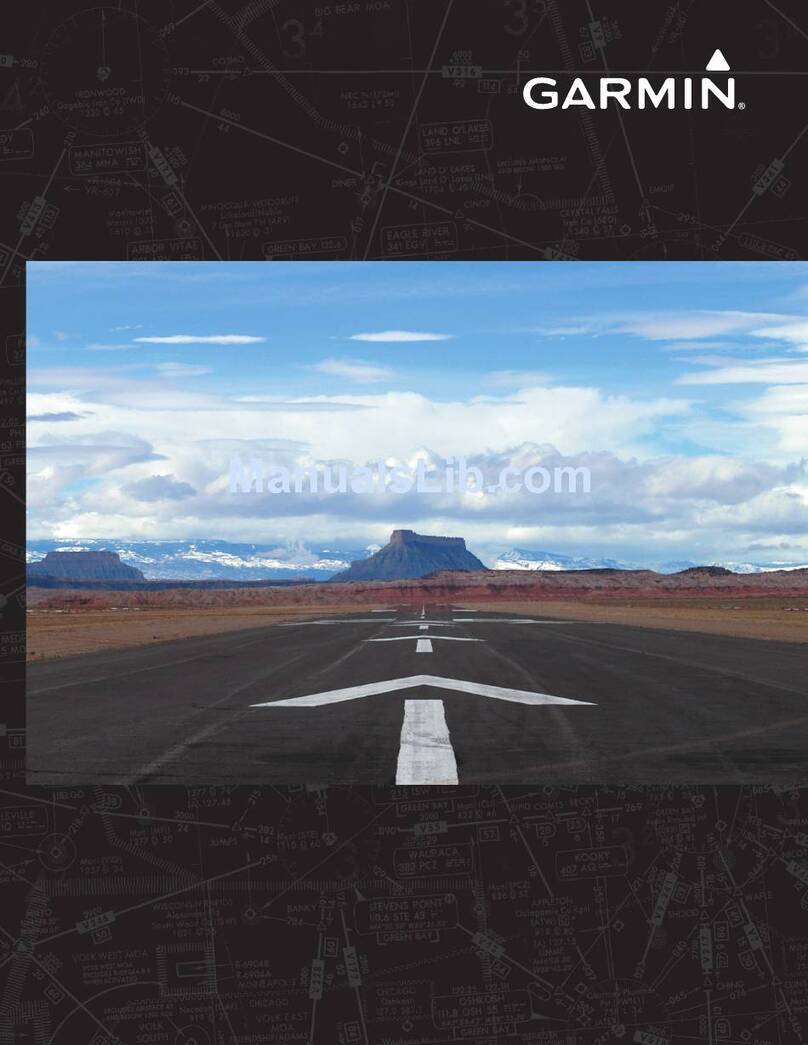BOMBARDIER Primus 2000XP Setup guide

For Training Purposes Only
Sept 04
2-i
PILOT TRAINING GUIDE
AUTOMATIC FLIGHT CONTROL SYSTEM
Chapter 2: Automatic Flight Con trol System
TABLE OF CONTENTS
Page
Introduction ......................................................................................................................... 2-1
Description .......................................................................................................................... 2-1
Guidance Panel............................................................................................................. 2-1
AFCS Schematic........................................................................................................... 2-3
Autopilot ........................................................................................................................ 2-4
Autopilot Engagement................................................................................................... 2-6
Autopilot Disengagement .............................................................................................. 2-7
Yaw Damper ................................................................................................................. 2-8
PFD Annunciation ......................................................................................................... 2-9
Flight Director (FD)...................................................................................................... 2-10
Guidance Panel........................................................................................................... 2-12
Flight Director Modes .................................................................................................. 2-14
Lateral Modes ............................................................................................................. 2-15
Bearing (BRG) Source ................................................................................................ 2-27
VOR/LOC Nav Source ................................................................................................2-28
FMS Nav Source.........................................................................................................2-29
Vertical Modes ............................................................................................................ 2-30
Multi-Axis Modes......................................................................................................... 2-35
Takeoff (TO) Mode...................................................................................................... 2-38
Go Around (GA) Mode ................................................................................................2-38
Windshear Guidance (WSHR) Mode ..........................................................................2-39
Automatic Emergency Descent Mode................................................................... 2-41
Autopilot – Flight Director EICAS Messages...............................................................2-42
EMS Circuit Protection ................................................................................................ 2-44

PILOT TRAINING GUIDE
AUTOMATIC FLIGHT CONTROL SYSTEM
2-ii For Training Purposes Only
Sept 04
PAGE INTENTIONALLY LEFT BLANK

For Training Purposes Only
Sept 04
2-1
PILOT TRAINING GUIDE
AUTOMATIC FLIGHT CONTROL SYSTEM
INTRODUCTION
The Primus 2000XP includes an Automatic Flight Control System (AFCS) that
provides dual channel autopilots, dual yaw dampers, dual flight directors and
automatic pitch trim. The autopilot and yaw damper functions operate in an active
standby mode, with only one channel active at a time. All computations are performed
by two Flight Guidance Computers (FGC), located in the Integrated Avionics
Computer (IAC). The FGC receives inputs from the Electronic Flight Instrument
System (EFIS), the Air Data Computers (ADC), the Inertial Reference System (IRS),
the Flight Management System (FMS), the Fault Warning Computer (FWC) and the
Data Acquisition Unit (DAU).
DESCRIPTION
All computations are performed by the FGCs which are located in IAC1 and IAC2.
The FGCs receive inputs from the following through the Avionics Standard
Communications Bus:
• Flight Management System
• Electronic Flight Instrument System
• Inertial Reference System
• Fault Warning Computer
• Data Acquisition Units
• Micro Air Data Computers
GUIDANCE PANEL
The AFCS functions controlled by the FGC include:
• Flight director modes
• Pitch wheel references
• Engagement of the autopilot and yaw damper functions
• Selection of left or right Primary Flight Display (PFD) data to be used by FGC

PILOT TRAINING GUIDE
AUTOMATIC FLIGHT CONTROL SYSTEM
2-2 For Training Purposes Only
Sept 04
Through the flight computer, the AFCS will provide flight guidance outputs for
display on the Primary Flight Display (PFD). The flight director functions are as
follows:
• Mode selection
• Computation of guidance
• Data management and source selection
• Command bar output for display
If an autopilot or flight director mode is armed or active, the annunciator on the
appropriate button is illuminated.
SPD
MAN
FMS
CRS 1 CRS 2
PUSH DCT PUSH DCT
ALTHDG
DN
UP
P
I
T
C
H
Honeywell
FD FDAP
CPL
YD
FLC NAV BANKHDG VNAV ALT
APR VS
BC
PUSH CHG PUSH SYNC
GX_02_001
Indicates FLC mode
is active
Indicates HDG mode
is active
(The PFD control panels are located on each
side of the guidance panel)
Indicates NAV mode
is armed or active.
MINIMUMS
BARO Hpa
RAD IN
BARO SETNAV SRC
BRG V/L BRGFMS
HSI
Honeywell PUSH STD

For Training Purposes Only
Sept 04
2-3
PILOT TRAINING GUIDE
AUTOMATIC FLIGHT CONTROL SYSTEM
AFCS SCHEMATIC
SPD MAN
FMS
CRS 1 CRS 2
PUSH DCT PUSH DCT
ALTHDG
DN
UP
P
I
T
C
H
Honeywell
FD FDAP
CPL
YD
FLC NAV BANKHDG VNAV ALT
APR VS
BC
PUSH CHG PUSH SYNC
MAX
THRUST
IDLE
REV
MAX REV
ENG
RUN
OFF OFF
RL
RUDDER
CONTROL SURFACE POSITION
CH 1 CH 2
TRIM SYSTEM
IAC 1 IAC 2
FGC 2
DUAL
ELEVATOR
SERVO
DUAL
AILERON
SERVO
YAW
DAMPER
ACTUATOR 1
YAW
DAMPER
ACTUATOR 2
FGC 1
DAU
MADC
FWC
IRS
EFIS
FMS
TOGA
BUTTONS
TRIM SWITCHES
CONTROL WHEEL
GUIDANCE PANEL
AP DISC
BUTTON
TOUCH
CONTROL
STEERING
(TCS)
GX_02_002
ASCB
AILERON ELEVATOR
N
O
S
E
D
N
N
O
S
E
U
P
D
I
S
C
M
A
S
T
E
R
T
C
S
IC
R/T

PILOT TRAINING GUIDE
AUTOMATIC FLIGHT CONTROL SYSTEM
2-4 For Training Purposes Only
Sept 04
Manual selection of the master AFCS channel is accomplished via the pop-up menu
on either multifunctional display (MFD), in conjunction with the MFD control panel
located on the pedestal.
AUTOPILOT
The autopilot (AP) system automatically controls the airplane in pitch and roll attitude
via servo control of ailerons, elevator and aircraft pitch trim system. The two autopilot
computer channels operate in a high priority/low priority (active/standby)
configuration.
Assignment of priority channel is alternated on power-up. The high priority channel
provides control functions, while the low priority channel operates in a back-up mode.
The autopilot/yaw damper actuators and pitch trim interface can only be driven by the
priority channel.
In the event of a channel failure, the priority will automatically switch to the other
channel.
Each FGC shall determine which symbol generator is driving the selected PFD, as
selected on the reversion control panel located on the pedestal. The following
guidance data is received via the Avionics Standard Communications Bus (ASCB), for
use in the FGC:
MENU
GX_02_003
FGC 12
FGC 21
1
3
2
MFD CONTROL PANEL
MFD
Honeywell
WX
AUTOTHROTTLE
SYSTEM 2/2
12
SAT
GSPD
-56
TAT
TAS
-40
234
345
LX
HDG
315
ETE0+02
2.5
DVT
NM
FMS1
000
N
55
3
6
33
30
-02
-02
+12
-04
KLAX
KPHX
TOC
SRP
LUF
DVT +09
T5.0
FGC 1 2
TCAS MENU
EMER
TERR
MAP
PLAN
NAV
APT
NORM ABN
SKP
RCL
PAG
ENT
ENT

For Training Purposes Only
Sept 04
2-5
PILOT TRAINING GUIDE
AUTOMATIC FLIGHT CONTROL SYSTEM
Air data source identification Lateral and vertical path deviations
Attitude source identification Distance to station
NAV source identification Tuned-to-NAV and To/From status
Course error Inner, middle and outer marker data
Heading error Radio altitude and flags
The source of other guidance information is selected via the source identifier received
from selected PFD symbol generator. The data received includes:
IRS:
Roll angle Normal acceleration
Pitch angle Ground speed
Roll rate True track angle
Pitch rate Flight path angle
Yaw rate Magnetic heading
Longitudinal acceleration True heading
Lateral acceleration Inertial vertical speed
ADC:
Baro-corrected altitude True airspeed
Pressure altitude Dynamic pressure
Vertical speed VMO
Mach MMO
Calibrated airspeed
FMS:
Lateral steering command and flags VNAV submode selection flags
VNAV targets
FWC:
Preselected altitude
Display Controller (DC):
Speed references

PILOT TRAINING GUIDE
AUTOMATIC FLIGHT CONTROL SYSTEM
2-6 For Training Purposes Only
Sept 04
AUTOPILOT ENGAGEMENT
Autopilot is engaged via the AP button on the guidance panel. When there are no
vertical or lateral mode active, the autopilot will engage in (PIT) and (ROL) FD
modes.
Autopilot control authority:
• Roll rate is limited to ± 7.5°/sec.
• Pitch rate
• ± 0.3 g’s in straight and level flight
• maximum 0.7 g’s pitch up in a turn
The autopilot can engage throughout the range:
• Pitch = ± 50°
• Roll = ± 75°
• Once engaged, the autopilot will reduce the pitch and roll angles below control
limits
Autopilot control limits:
• Roll = ± 35° except in Approach (APP) mode. When in APP mode, the roll limits
are reduced linearly from ± 25°, above 200 feet radio altitude, to ± 5° at zero feet
radio altitude
• Pitch = ± 20°. In APP mode, the nose-down pitch limit is reduced below 300 feet,
programmed by vertical rate and radio altitude
CRS 2
PUSH DCT
Honeywell
FDAP
CPL
YD
AP
AP
CRS 2
PUSH DCT
Honeywell
FDAP
CPL
YD
GX_02_004
AP1
AP2
When selected, or will flash for
approximately 5 seconds, then steady.
AP1 AP2
20 20
10 10
20
ROL PITAP1
0.88 30000
23500
220
200

For Training Purposes Only
Sept 04
2-7
PILOT TRAINING GUIDE
AUTOMATIC FLIGHT CONTROL SYSTEM
AUTOPILOT DISENGAGEMENT
Autopilot disengagement is accomplished by activating any of the following:
• AP button on guidance panel
• Autopilot quick-disconnect (DISC) button on either control wheel
• Manual stabilizer trim when touch control steering (TCS) not active
• YD button on FGC panel
• TCS button on either control wheel (while depressed).When the TCS button on
either control wheel is activated, the aileron and elevator servo clutches are
released, the autopilot is disengaged and the flight director is resynchronized.
Releasing the TCS button reengages the servo clutches and autopilot is engaged, if
within normal pitch and roll limits. Where applicable, the flight director modes
will react as if the autopilot had just been engaged
• Takeoff/Go Around (TOGA) buttons on thrust levers
• Motor trip/failure or AFCS failure
• Stick shaker acuation
The AP1 or AP2 annunciator will flash red continually and an aural “cavalry charge”
will sound repeatedly. The annunciation and aural can only be canceled by depressing
DISC on either control wheel.
N
O
S
E
D
N
N
O
S
E
U
P
D
I
S
C
M
A
S
T
E
R
T
C
S
GX_02_005
Stabilizer
Trim
Autopilot Quick
Disconnect Button
(DISC)
Touch Control
Steering (TCS)
PILOT’S CONTROL WHEEL
IC
R/T
GX_02_006
Takeoff/Go Around
(TOGA) Buttons

PILOT TRAINING GUIDE
AUTOMATIC FLIGHT CONTROL SYSTEM
2-8 For Training Purposes Only
Sept 04
YAW DAMPER
The yaw damper provides stability augmentation and turn coordination for the
airplane yaw axis via two linear actuators, in series with the rudder control system.
The yaw damper function will automatically engage on the ground, within 3 seconds
after successful completion of AFCS power-up test. As with the autopilot, the yaw
damper operates in an active/standby configuration. When engaged, the active yaw
damper will center both linear actuators.
The YD will not automatically engage once the airplane is airborne. The YD button,
located on the guidance panel, may be used to reengage the YD. When YD is engaged,
the associated arrow on the guidance panel is illuminated.
One yaw damper must be engaged for autopilot operation. Autopilot engagement
without YD will occur only when both YDs have failed in flight.
For more information on yaw damper, please refer to Chapter 10, FLIGHT
CONTROLS.
GX_02_007
CRS 2
PUSH DCT
Honeywell
FDAP
CPL
YD
Table of contents
